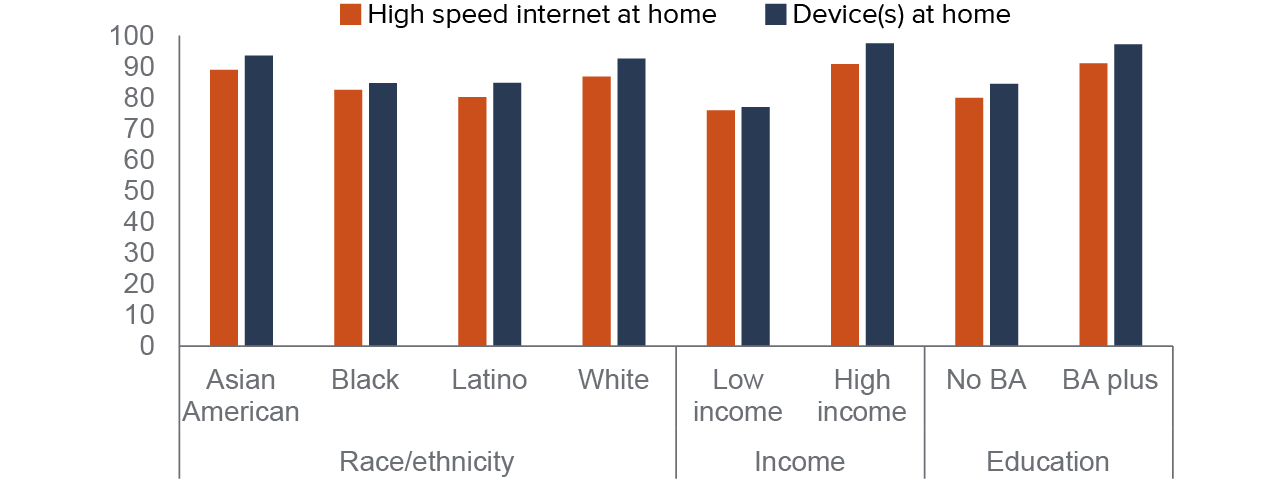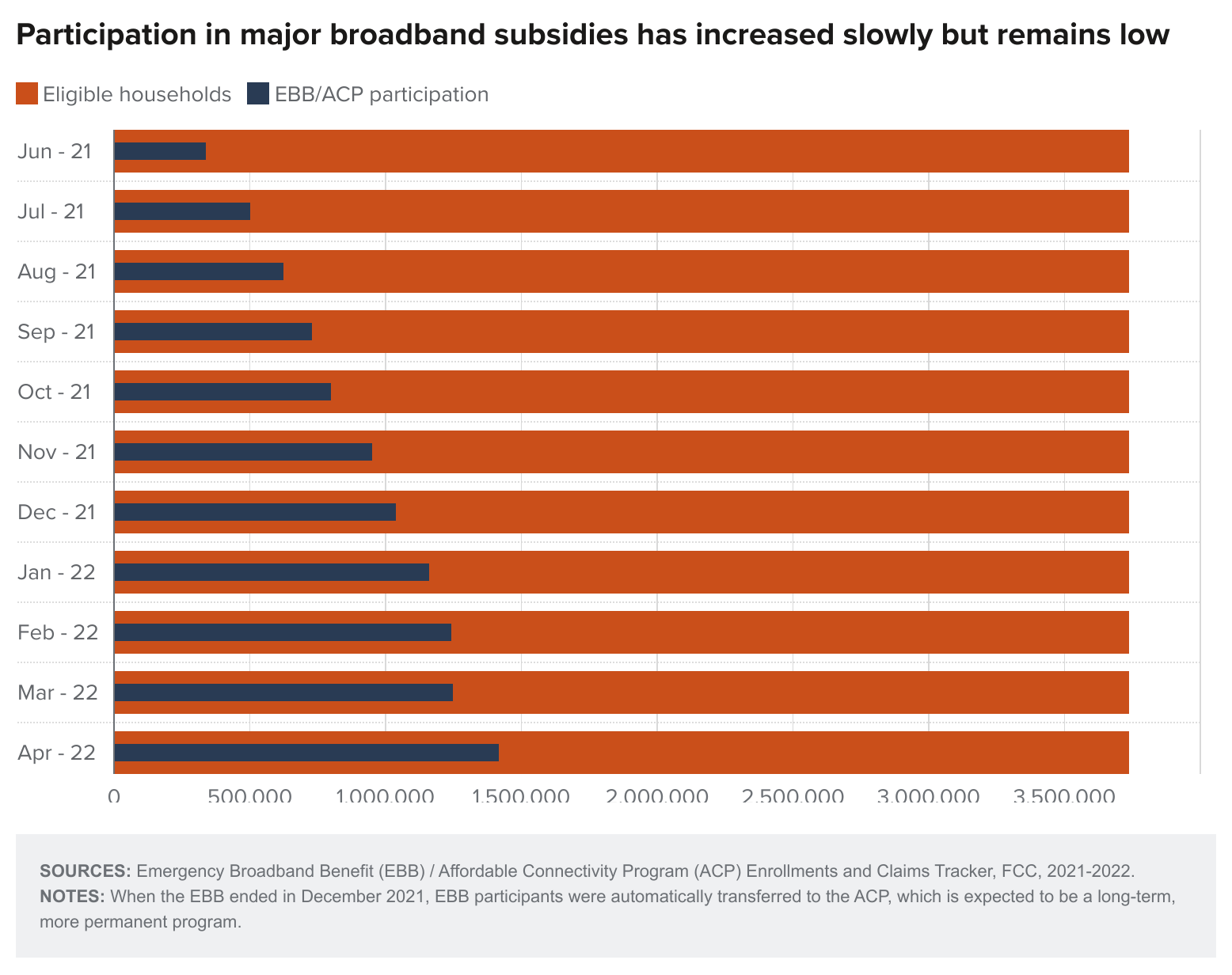The 2020 American Community Survey (ACS) had to address substantial nonresponse bias due to the onset of the pandemic; as a result, the 2020 estimates differ from and are more limited than previous years’. We present these ACS findings cautiously, and we do not make direct comparisons with prior years.
Broadband access has been expanding steadily, but significant gaps persist.
- Broadband access has been growing steadily over the past several years. According to the ACS, 74% of California households had high-speed internet at home in 2017; the share increased to 84% in 2019.
- Experimental data from the 2020 ACS show that 85% had high-speed internet (or broadband) and 94% of Californian households had internet access—of any kind, including via cell phone.
- Home broadband access has been increasing across most demographic groups, but racial/ethnic gaps persist: 80% of Latino households and 83% of Black households reported having broadband in 2020, compared to 87% of white households.
- Households headed by adults 65 and older (83%), households with annual income below $50,000 (76%), and households headed by non–college graduates (80%) were less likely to report broadband access in 2020.
Low-income households were less likely to have access to broadband and devices in 2020

SOURCE: American Community Survey, 2020.
NOTES: The average household size is three. Low-income households are those with annual income below $50,000; this is roughly 225% of the federal poverty line for a household with three persons ($51, 818). High-income households have annual incomes above $100,000. Education level and race/ethnicity are those of the household head. Within-category differences from the privileged group (white, high income, and BA plus) are significant at the 1% level.
Most households have multiple internet users—and greater bandwidth needs.
- Most Californians share broadband with others in their households: as of 2020, 77% of households reported having multiple users.
- Households with multiple users require additional bandwidth for reliable access to online instruction and videoconferencing—which became a necessity for many during the pandemic. The average-size household in California includes 2.7 people; the average size of households with school-age children is 4.5.
Household access to computing devices also varies across demographic groups.
- In 2020, 10% of Californians reported not having a desktop, laptop, or other computing device at home.
- Access was especially limited among low-income (23%), less-educated (16%), Black (15%), and Latino (15%) households.
- Notably, 5% of households with school-age children did not have home access to a device.
The digital divide in K–12 education narrowed during the pandemic, but remote learning was challenging for many students.
- After most schools and colleges switched to distance learning in spring 2020, educators and policymakers focused successfully on narrowing the state’s longstanding digital divide. But digital access is still considerably lower among students in low-income, less-educated, and Black and Latino households.
- Most California students spent the entire 2020–21 school year online. According to the April 2022 PPIC Statewide Survey, 44% of parents of school-age children—especially low-income parents (55%) and parents without college degrees (51%)—believe their child has fallen behind during the pandemic.
Federal and state governments are taking steps to close the remaining digital divide.
- California Senate Bill 156 (2021) provides $6 billion to expand broadband infrastructure and enhance internet access in unserved and underserved communities. The federal Infrastructure Investment and Jobs Act provides at least $100 million to expand broadband infrastructure in California.
- In May 2021, the Federal Communications Commission (FCC) launched the Emergency Broadband Benefit (EBB) program, which offered a broadband discount of up to $50 per month. The EBB expired at the end of 2021 and was replaced by the Affordable Connectivity Program (ACP), which offers long-term support for eligible households—but at a reduced amount of $30 per month.
- Most eligible households are not yet getting broadband subsidies: while the FCC estimates that at least 3.7 million California households are eligible, only 1.4 million had enrolled in the EBB or ACP as of April 2022. Nonetheless, these programs have helped increase digital access.




